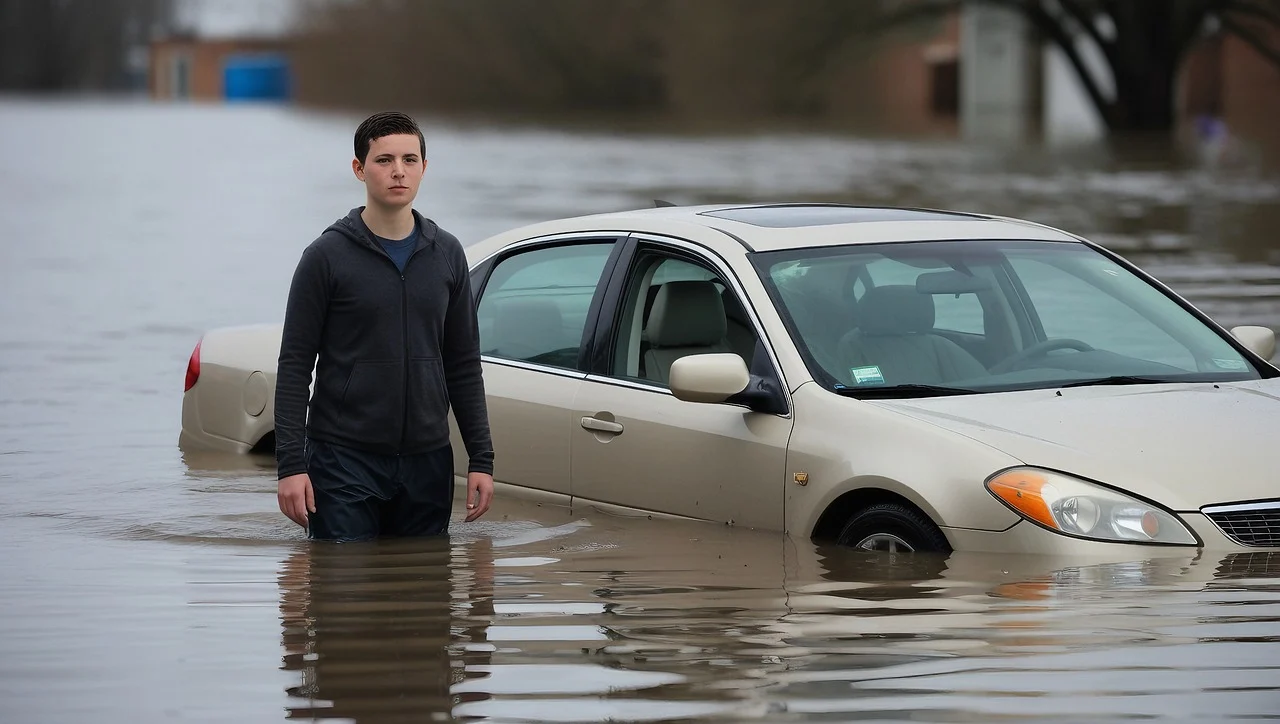Introduction
On Thursday, Bogotá, the capital of Colombia, was hit by intense rainfall that caused widespread flooding across the city. The heavy downpour, which lasted several hours, submerged streets, trapped vehicles, and stranded residents in their homes and workplaces. Emergency services scrambled to assist those affected, but the severe weather left a significant mark on the capital’s infrastructure and daily life.
1. Devastating Impact of the Rainstorm
The heavy rainfall caused rivers and streams around Bogotá to overflow, submerging key roadways and flooding several residential and commercial areas. Vehicles were left stranded on submerged streets, with many unable to move due to rising water levels. The City of Bogotá reported extensive traffic disruptions, with some of the city’s busiest roads completely impassable. The downpour affected areas in the north and south of the city, exacerbating the challenges for both commuters and emergency crews.
Footage shared on social media showed people wading through waist-deep water, attempting to reach higher ground, and vehicles stalled in the streets as floodwaters rapidly rose. In some areas, public transport was halted, and people were trapped in buses or metro stations due to the sudden deluge.
2. Unprecedented Flooding and the Role of Infrastructure
Bogotá, located in the Andean region of Colombia, has a history of seasonal rains, but the intensity of this storm caught many residents off guard. Experts attribute the extreme rainfall to climate change and the occurrence of El Niño or La Niña weather phenomena, which can exacerbate rainfall patterns.
Local authorities have acknowledged that the city’s drainage infrastructure is not fully equipped to handle such extreme weather events, resulting in widespread flooding. Some areas of Bogotá are particularly prone to flooding due to their proximity to rivers, and the storm quickly overwhelmed the existing drainage systems.
3. Emergency Response and Rescue Efforts
Rescue operations are currently underway across the city. Local authorities and emergency services are prioritizing the evacuation of people trapped in flooded areas and providing assistance to those whose homes have been damaged. The Bogotá Fire Department and Red Cross have been actively involved in rescuing individuals, especially in neighborhoods that have seen the worst of the flooding.
The city’s mayor’s office has activated emergency protocols, including setting up temporary shelters for displaced individuals and coordinating with the national government for further resources. There has also been an increased presence of military personnel to assist in clearing blocked roads and helping stranded residents.
4. The Impact on Transportation and Business
Transportation systems have been severely disrupted due to the floods. Major highways in and out of Bogotá were blocked by fallen debris, and many parts of the city’s bus system were shut down or delayed. The TransMilenio bus rapid transit system also experienced delays and service interruptions due to flooded stations and roadways.
The commercial sector has also been affected, with many businesses forced to close or delay opening due to the storm. Local shops, markets, and other establishments in affected areas have suffered property damage, and economic losses are expected to rise as the recovery effort continues.
5. Looking Ahead: Recovery and Future Preparedness
As Bogotá begins to recover from the devastating floods, city officials are calling for better preparation and investment in climate-resilient infrastructure to cope with future extreme weather events. This includes improvements to the city’s drainage systems, flood barriers, and disaster response strategies.
Local experts have warned that Colombia, and particularly Bogotá, will continue to face significant challenges related to climate change, with more frequent and intense weather events expected. Increased investment in urban planning and climate resilience will be crucial for the city to mitigate the risks posed by such storms in the future.
Conclusion
The floods in Bogotá highlight the vulnerability of major urban centers to extreme weather events, especially as climate change continues to impact weather patterns across the globe. While emergency services have been quick to respond, the scale of the damage caused by Thursday’s storm underscores the need for stronger infrastructure and better preparedness to protect communities from the devastating effects of flooding.
As rescue efforts continue, the city faces the difficult task of assessing the full extent of the damage and beginning the long process of recovery. The people of Bogotá, however, are resilient, and the collective response from local authorities, businesses, and residents will be critical in the days and weeks ahead.
References:
- Bogotá Flooding: Emergency Response and Impact
- The Weather Channel – Colombia Floods
- Al Jazeera – Colombia Weather and Climate

